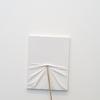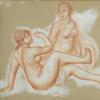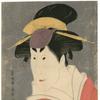Photo L.A. to Honor Jo Ann Callis, Among an Array of Programs and Exhibitors Covering Historic to Contemporary Photography This Week
- LOS ANGELES, California
- /
- January 22, 2019
On view from January 31st - February 3rd, 2019, in the Historic Barker Hangar, Santa Monica, Calif. is the longest running international photographic art fair on the West Coast. Photo L.A. has been in operation for nearly three decades. The fair offers a curated roster of local and international exhibitors as well as highly anticipated special installations, docent tours, film screenings, panel discussions, artist talks and programming lectures.
This year, Photo L.A. 2019 honors Jo Ann Callis, with a special installation and artist talk. A central figure in the Southern California photography scene since the 1970s, Callis is known for her provocatively staged scenarios with a poetic dimension. In her work, the inner world of the artist finds material expression through creative juxtapositions, bold colors, playful constructions.
An Artist panel talk at 3:30 pm on Feb. 2, with independent curator Claudia Bohn-Spector, LACMA curator Rebecca Morse and artist Brandy Trigueros, explores what Callis' work can tell us about womanhood and female art-making during a politically charged time in which her concerns appear as germane and compelling as ever.
Both Callis' early black & white and color pictures, taken while studying under Robert Heinecken at UCLA, attest to the artist's singular and lasting influence on photography through her inventive analysis of the pleasures and terrors of domestic comfort. In her work from the 70s, Callis merges perceived pain and apparent pleasure into a complex, inclusive representation of sensuality and sexual curiosity. Her deft use of opposing textures invites the viewer to lightly graze a sumptuous silk pinned to a grubby wall and tug at the taut string crisscrossing the model's backside.
The subjects in the black & white photographs are often robed in shadows, reflections, masks, and veils, lending a sends of foreboding to their lush settings and nubile bodies. Yet in every image the artist's presence is palpable and lends a pervading sense of safety to the recalculated play. Callis dances just beyond the frame, delighting the world she has created a world of fragmented narrative and a a childlike sense of continual experimentation.
The lively resurgence of Callis' mid-1970s images suggests that her creative preoccupations remain relevant and fresh to this day. The uneasy tensions, strange vibes and fetishistic delights conveyed in her work continue to inspire young image-makers and point to Callis' lasting impact on contemporary art.










__Portrait_of_a_Young_100x100_c.jpg)

